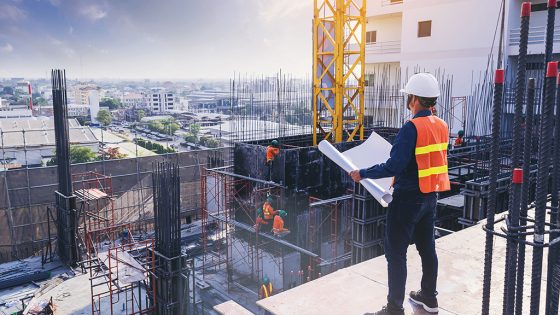As the latest phase of the post-Grenfell building safety regime kicks in, CN talks to two of its designers about how the new regulator is taking to its role
In April, the Building Safety Regulator (BSR), which sits under the Health and Safety Executive (HSE), took over full responsibility for regulating high-rise residential buildings.
There were a few wobbles – notably, a last-minute scramble to ensure enough building inspectors could meet their new requirements.
“The competency is out there, the jigsaw pieces just need to be put in different places”
Neil Hope-Collins, HSE
Annette Hall, head of operational policy for the higher-risk building (HRB) framework, has led the work to set up the new regime for the past four years, including on Planning Gateway One and the Building Assessment Certificate.
Hall brought in veteran health and safety inspector Neil Hope-Collins to provide background knowledge when the 2022 Building Safety Act was being drafted and to help design the new building-control procedures. Now the HSE’s operational policy lead for HRB building control authority, he guides the team that assesses the applications.
Having assembled a team of eight case officers and 10 regulatory leads (increasing to 14 and 28 respectively within the next few months), Hall and Hope-Collins reflected on how the new regulator was taking to its role.
How has the construction industry responded to the new regime – are firms doing enough?
NH: Some people get it. Some people don’t. Some people have been told and don’t quite believe it yet.
AH: A number of larger construction firms get it. They’ve been working with us from the beginning and they understand what’s trying to be achieved.
NH: Dame Judith [Hackitt] highlighted a number of failings in the industry [in her 2018 report Building a Safer Future]. She found ambiguity over roles, and that the primary motivation was to do things as quickly and cheaply as possible rather than deliver quality homes. I think time has moved on now for some in the industry and that report has slipped back [in their minds]. I think we forget it at our peril.
Has the BSR provided enough clarity to the industry over the new rules?
NH: The government consultation response from July 2022 sets things out quite clearly. Anyone who understands the way industry and government works should recognise that a response to a formal government consultation sets out the direction of legislation and signals what it will look like. Written guidance from the government set out things like timescales and hard stops right from that point.
How many [previous] projects have run over budget, over time, because [the builders] found that they hadn’t known what they were going to build as they were building? We’re not asking for any more than they ended up with at the end of the project anyway. Investors are paying a lot of money for these buildings. They should know that they’re getting their money’s worth and buying a building that is legal.
Do you think the construction industry can meet the competence challenge?
NH: I think the competency’s out there, the jigsaw pieces just need to be put in different places. There’s the quote from Morecambe and Wise: “All the right notes, but not necessarily in the right order.” I like to think of the new system as putting the right notes in the right order.
Do you feel the BSR has enough capacity?
AH: When we put what was effectively our funding bid to the department [for Levelling Up, Housing and Communities] and Treasury, we did a lot of modelling to work out what the size of the BSR should be. It was based on how long we thought certain tasks would take, expertise, knowledge that was currently out there in the industry and how we expected things to change. There’s nothing we have seen since we’ve gone live that suggests that our modelling is fundamentally flawed.
Would the BSR be able to deal with an influx of applications from schemes that fall foul of the transitional arrangements?
AH: Yes. It relies on industry doing its part, but yes, I think we are. We’ve modelled a lot of this.
How is the workforce overseeing the regime being developed?
AH: We’re recruiting people and training them to become regulators. We work with multidisciplinary teams, and all our building-control decisions are made with the advice of… a class-three building inspector [a BSR-registered inspector qualified to work on HRBs], primarily through local authorities, but also private businesses where appropriate.
NH: The new people coming in sit at the head of a roundtable of discipline experts. The principle is: how do you sit at the centre of that table and get the best out of that team? The registered building inspector gives us the advice… but there will be structural engineers, acoustic engineers, environmental experts and fire engineers sat around that table.
We will have the right people at the right time taken from those [disciplines]. We [HSE] is good at that stuff. That’s what we have been doing for years. I genuinely believe that that’s why the government asked us to take this and run with it.
AH: There’s a very important point here, which takes us back to Hackitt. We need to move the industry from a position where the building inspector derisks projects for the client and the investor, to building inspectors supporting the BSR to regulate.
It’s a cultural change – moving the industry into the position where the people that create the risks, own the risks.

